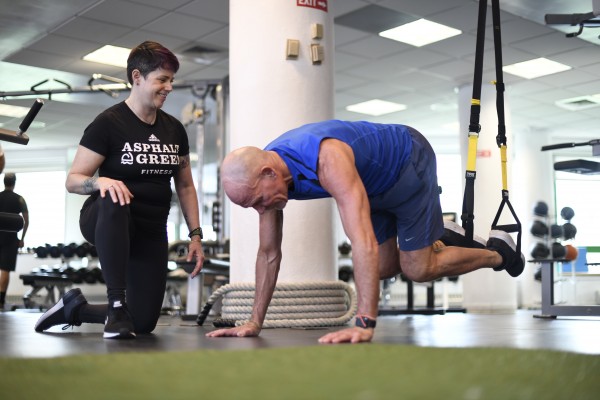As the new year approaches, most fitness enthusiasts are ready to hit the ground running with fresh goals for 2025. Whether you’re striving for a healthier lifestyle, improved performance on the field or in the gym, or simply aiming to move more each day, setting clear goals is critical to your success. However, even with the best intentions, common mistakes can derail progress and set you off on the wrong foot. Here are the top five mistakes to avoid when planning your 2025 fitness goals, and what you should do instead.
1. Setting Unrealistic Goals
It’s great to dream big, but setting goals that are too ambitious can lead to frustration and burnout. For example, aiming to lose 20 pounds in a month or aiming to run a marathon without a rigid training plan is unlikely to be sustainable.
What to do instead:
Before setting any fitness goal, it’s important to take inventory of your fitness level to see where you’re at. At Asphalt Green, our fitness trainers provide new members with a free assessment for this reason. Once your self-assessment is complete, focus on small, achievable milestones that build toward larger goals. For instance, aim to lose 1–2 pounds per week or start with a 5K race before progressing to longer distances. Don’t forget to celebrate your progress along the way!
2. Not Defining Clear, Measurable Goals
Being detailed and specific in your fitness goals can drive consistency and success. It’s important to avoid vague objectives such as “working out more in 2025,” as they can lead to inconsistency and lack measurable outcomes.
What to do instead:
Make your goals SMART: Specific, Measurable, Achievable, Relevant, and Time-bound. For example, rather than thinking of improving your stamina, set a clear goal like running five miles per week.
3. Sticking To the Same Exercises or Routine
While consistency is important, doing the same workouts repeatedly can lead to plateaus, boredom, and even overuse injuries. Your body adapts to repetitive movements, which can stall your progress over time.
What to do instead:
Incorporate variety into your workouts. Try new exercises, adjust the intensity, or mix in different types of training like strength, cardio, or flexibility work. Periodically reassessing and refreshing your routine not only keeps things interesting but also challenges your body in new ways to promote continuous improvement.
Asphalt Green fitness offers a wide range of classes and offerings, from Pilates and yoga to cycling, strength training, and more, to empower our members to explore new passions and keep their routines fresh.
Explore fitness offerings at one of our campuses:
4. Trying To Do It All Alone
Embarking on your fitness journey solo can be isolating and leave you unmotivated or worse, unaccountable. While fitness journeys are deeply personal, they shouldn’t be taken alone.
What to do instead:
Find partners for your fitness journey. Asphalt Green’s expert trainers work directly with members to build customized programs and track your progress. In addition, our group exercise classes allow you to train with fellow community members and reach your goals together.
5. Neglecting Recovery and Flexibility
It's easy to focus on workouts and overlook the importance of recovery. As eager as you may be to reach your next objective, proper recovery is just as important as proper training to reach peak performance. Overtraining or being too rigid with your plan can lead to injury or burnout.
What to do instead:
Incorporate rest days into your routine and listen to your body. Building recovery activities like stretching or yoga into your routine ensures your body stays strong and resilient.


